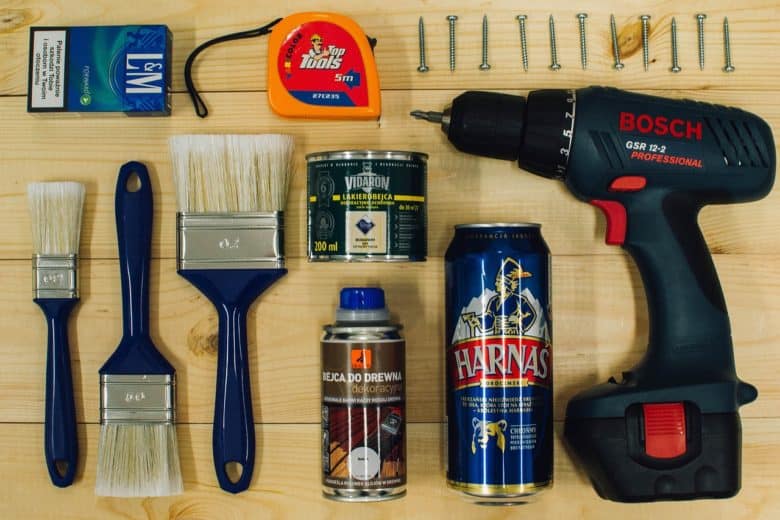
7 Eco-Friendly House Ideas for the Green Remodeler
We are reader-supported. When you buy through links on our site, we may earn affiliate commission.
If you’ve decided it’s time for a little home renovation, you’re already on your way to making greener choices. Remodeling instead of building a new home from scratch reduces your impact on the environment and makes good use of resources you already have in your house. Continuing to make changes with sustainability in mind will allow you to further your green efforts and design a uniquely beautiful interior that matches your personality and passion. Here are just a few eco-friendly house ideas to incorporate into your next remodel.
1. Deconstruct
If your renovation plans include tearing down walls and demolishing kitchen cupboards, take a walk through your home first to determine what you can salvage and reuse. You’ll often find that those ugly cabinets or bright yellow light fixtures can be used somewhere else or be upcycled as something different. Moving a chandelier or tile flooring to another area of your home can create a whole new look and feel to a room and reduce waste.
2. Donate Unwanted Items
If you really can’t find a fresh use for your lime green cabinets or crown molding, consider donating them before tossing them in the dumpster. Take unwanted items to Goodwill or a consignment shop so they may be repurposed in someone else’s home. If you have a friend or family member with a love for reusing reclaimed materials, pass off your items to them. This saves others from hauling new stuff to their homes, making the process more environmentally friendly and affordable for everyone involved.
3. Repurpose
While you’re at the consignment shop, you might as well take a look around, too. Look for doorknobs, light fixtures or other items you can repurpose and add to your remodel. You might also check out Habitat for Humanity, which sells used high-end products. If you are committed to using mostly recycled materials, you can even earn a certificate of Leadership in Energy and Environmental Design (LEED), which helps give your home curb appeal and awards your innovative, eco-friendly efforts.
4. Shop Local
If you can’t find lightly used materials or appliances at an antique store or consignment shop, you may have to resort to purchasing new items. While this isn’t the most eco-friendly option, you can shop wisely by supporting local businesses. This helps keep your dollars in your community and supports the economy, which is still a very sustainable option for the green remodeler.
5. Prioritize Energy Efficiency
Appliances, like refrigerators and ovens, can be huge energy-wasters if you aren’t careful. When shopping around for new household gadgets, look for ones that are the most energy-efficient. You may also consider limiting your electrical independence. Generate your own power by installing solar panels, wind turbines or geothermal systems. Although the initial cost will be an investment, they’re more cost-efficient and energy-efficient in the long run. Essentially, these installments will pay for themselves in a few years.
6. Insulate
If you can’t front the cost of energy-efficient appliances, you can insulate your home well instead. The better insulated your home, the less energy you’ll need to heat and cool it. Use loose-fill insulation with cellulose fibers from recycled paper, and insulate pipes with fiberglass. Reseal leaks around windows and doors at least once a year, replacing caulk and weather stripping as needed. You can also install sweeps under doors to prevent drafts.
7. Create a Recycling Center
Another small but meaningful change you can make while remodeling is to create a centralized recycling center. This may work best in your kitchen, where most packaged and single-use items are already located. Consider under-cabinet space and hidden storage areas. Make sure the center is easy to access and clean. If you need any extra materials or accessories to make recycling more convenient, do so during the renovation. After the remodel is complete, you’ll want to relax and enjoy your new home, not run to the store for more materials.
Think Big, but Start Small
Remodeling your home with eco-friendly materials and methods doesn’t have to be difficult. Still, it may be overwhelming if you can’t decide where to focus the majority of your efforts. It may sound nice to have energy-efficient appliances, solar technology, high-end insulation and maybe even a compost bin in your kitchen. However, adding all these to your to-do list at one time can be overwhelming and simply impossible to accomplish. Instead, focus on one small task at a time and look for simple ways to make your home more eco-friendly. Think about remodeling on a room-to-room basis and hone in on projects that mean a lot to you. If you’re committed to using reclaimed wood, search for ways you can incorporate it into your home. If you love recycling, focus on creating new ways to make the process more convenient. Over time, these small changes will add up and make a huge difference for both the environment and your pocketbook.
Share on
Like what you read? Join other Environment.co readers!
Get the latest updates on our planet by subscribing to the Environment.co newsletter!
About the author

Jane Marsh
Starting from an early age, Jane Marsh loved all animals and became a budding environmentalist. Now, Jane works as the Editor-in-Chief of Environment.co where she covers topics related to climate policy, renewable energy, the food industry, and more.





